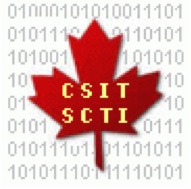Simon Haykin
McMaster University

Title: Predictive Pre-adaptive Information processing for Cognitive Risk Control
Abstract: It was in 1990 that I presented a lecture on Radar Vision at the IEEE International Radar Conference, Arlington VA; it was at that conference I spoke about radar vision as an intelligent remote-sensing device that is capable of “cognition’’ of the surrounding environment. From then on, I took it upon myself to learn more and more about human cognition as a new way of thinking about engineering applications. In 1999, Mitola and Maguire went on to present a paper on Cognitive Radio as a novel way of making software radios more personal. It was Mitola’s paper that prompted me to publish the paper entitled Cognitive Radio: Brain-empowered wireless communications, followed in 2006 by Cognitive Radar: A way of the future. Putting it altogether, in an IEEE point-of-view article, I introduced Cognitive Dynamic Systems (CDS) as the umbrella that includes Cognitive Radio and Cognitive Radar as special cases of CDS.
Turning next to Cognitive Control as a new addition to CDS, it was found to be highly challenging for the simple reason: Unlike traditional control, Cognitive Control operates on the environment indirectly via the preceptor, the function of which is to model the observables to set the stage for estimating the state of the environment. It was in 2009, that Cognitive Control was published for the first time; a more refined version of it was published in 2012.
With this brief background, I will describe the expansion of cognitive control to formulate Cognitive Risk Control, the essence of which is based on the principle of Predictive Pre-adaptation that is well-known in cognitive neuroscience. This new way of thinking in control theory will appear in a new edited book entitled Cognitive Dynamic Systems. Currently, we are working on the formulation of Hierarchical CDS to bring it that much closer to the Brain.
One last comment is in order: In one form or another, Cognition is spreading rapidly in different ways around the world. Most importantly, the Hierarchical CDS will be the basis for the construction of a new generation of Truly Smart Products. I am therefore emboldened to say that Hierarchical CDS will establish itself as an important element in the Fourth Industrial Revolution.
Speaker’s short biography
Simon Haykin received his B.Sc., Ph.D., and D.Sc. in Electrical Engineering from the University of Birmingham, England, where after he spent a good number of years in industry, then moved into the world of academe in England, and finally, joined the ECE Department, McMaster University, where he is Distinguished University Professor.
For the early years, his research program focused on adaptive signal processing for radar and communications, then spending more of his time on Neural Networks and Learning Machines, which in turn led him to research into Cognitive Dynamic System with pioneering applications in radar, control, and radio. Needless to say, this new way of thinking has become his passion.
Professor Haykin is a Fellow of the IEEE, Fellow of the Royal Society of Canada, and the recipient of an Honorary Doctorate of Technology from ETH, Zurich, Switzerland. He is also a recipient of many medals from within Canada, the United States, and Europe.
Amir Khandani
University of Waterloo

Title: Media-based Modulation: Higher Spectral Efficiency and Improved Security for Future Wireless Systems
Abstract: The idea of Media-based Modulation (MBM) is based on embedding information in the variations of the transmission media (channel states). This is in contrast to conventional wireless systems where data is embedded in a Radio Frequency (RF) source prior to the transmit antenna. MBM offers several advantages vs. conventional systems, including “additivity of information over multiple receive antennas”, and “inherent diversity when operating over a static fading channel”. MBM is particularly suitable for transmitting high data rates using a single transmit and multiple receive antennas (Single Input-Multiple Output Media-Based Modulation, or SIMO-MBM). It is shown that a 1xK SIMO-MBM over a static multi-path channel asymptotically achieves the capacity of K parallel Additive White Gaussian Noise (AWGN) channels, where for one unit of energy sent over the single transmit antenna, the effective energy for each of the K AWGN channels is equal to one (the statistical average of channel/fading gain).
Complexity issues limit the amount of data that can be embedded in the channel state using a single transmit unit in SIMO-MBM. To address this shortcoming, this presentation also presents the idea of Layered Multiple Input-Multiple Output Media-Based Modulation (LMIMO-MBM). LMIMO-MBM enables forming a high-rate constellation as the superposition of constituent vectors due to separate transmit units. Relying on such a layered structure, LMIMO-MBM can significantly reduce hardware and algorithmic complexities, as well as the training overhead, vs. SIMO-MBM. Exploiting the layered constellation structure, a fast iterative algorithm is proposed for signal detection. Simulation results show excellent performance in terms of Symbol Error Rate (SER) vs. Signal-to-Noise Ratio (SNR). For example, a 4X16 LMIMO-MBM is capable of transmitting 32 bits of information per (complex) channel-use, with SER~10-5 at Eb/N0~-3.5dB (or SER~10-4 at Eb/N0~-4.5dB). This performance is achieved using a single transmission (no extension in time/frequency), and without adding any redundancy for Forward-Error-Correction (FEC). This means, in addition to its excellent SER vs. energy/rate performance, MBM relaxes the need for complex FEC structures used in conventional wireless systems, and thereby minimizes the transmission delay and overhead. Application of FEC can further improve the performance. For example, applying Reed-Solomon codes enables transmitting 30 bits of information per (complex) channel-use with a Frame Error Rate (FER)~10-5 at Eb/N0~-6dB. It is shown that, under a set of mild conditions, by applying FEC with error correction capability t, the slope of the error rate vs. SNR (with hard decision decoding) will asymptotically increase by a factor of t+1.
A practical (small size and low complexity) RF configuration is presented for embedding information in the channel state. For this purpose, periodic RF constructions are used which can act as on-off RF mirrors. The on-off operation relies on simple RF switches, and can support very fast switching for high bandwidth applications. It is also shown that a proper RF implementation allows implementing an NxK MIMO-MBM using a single transmit chain (instead of N).
It is shown that the same antenna configuration can be used to provide unconditional security in wireless. This is based on using a wireless channel to establish a secret key (one-time pad) between two legitimate parties. Wireless channel enables providing a reference of phase between the two legitimate parties, which in turn is used to extract a common phase value. Each such phase value can completely mask a phase-shift-keying (PSK) symbol (zero information leakage). The shared phase depends on the propagation environment between legitimate parties and will be impossible to guess even by an eavesdropper that is located in close vicinity, has unlimited processing power, and enjoys multiple antennas and high signal-to-noise ratio. It is shown that the same antenna configuration used for media-based modulation can perturb the wireless channel such that a number of such common phase values can be generated, together providing a longer secure key.
Speaker’s short biography
Amir K. Khandani is a professor in Electrical and Computer Engineering Department of the University of Waterloo. He holds a Tier I Canada Research Chair (CRC) on Information Theory for Wireless Networks, and an NSERC-Ciena Industrial Research Chair (IRC) on Information Theory for Backbone Networks. Previously, he held a Tier I CRC, the NSERC-Nortel IRC, and subsequently, the NSERC-Blackberry IRC, all on Wireless Transmission. Dr. Khandani received his degrees from Tehran University, Iran, and McGill University, Canada, in 1984 and 1992, respectively. He joined University of Waterloo in 1993. Khandani’s team is responsible for introducing the concept of Interference Alignment, an area widely pursued and considered a theoretical breakthrough. His team established the theory and implemented a functional prototype of the first Full-duplex Wireless node, an area that had challenged researchers for several decades.
Moe Z. Win
Massachusetts Institute of Technology

Title: Location, Location, and Location!
Abstract: The availability of positional information is of extreme importance in numerous wireless applications. The coming years will see the emergence of location-aware networks with sub-meter localization accuracy, minimal infrastructure, and robustness in harsh (GPS challenged) environments. To reach this goal we advocate network localization and navigation, a new paradigm that exploits a combination of wideband transmission and spatiotemporal cooperation. Our work has addressed this problem from three perspectives: theoretical framework, cooperative algorithms, and network experimentation. We will give an overview of our recent research results in this exciting field.
Speaker’s short biography
Moe Win is a Professor at the Massachusetts Institute of Technology (MIT). Prior to joining MIT, he was with AT&T Research Laboratories for five years and with the Jet Propulsion Laboratory for seven years. His research encompasses fundamental theories, algorithm design, and experimentation for a broad range of real-world problems. His current research topics include network localization and navigation, network interference exploitation, intrinsic wireless network secrecy, adaptive diversity techniques, and ultra-wideband systems.
Professor Win is a Fellow of the AAAS, the IEEE, and the IET, and served as an IEEE Distinguished Lecturer. He is an elected Member-at-Large on the IEEE Communications Society Board of Governors (2011–2013). He was the Chair (2004–2006) and Secretary (2002–2004) for the Radio Communications Committee of the IEEE Communications Society. He was honored with two IEEE Technical Field Awards: the IEEE Kiyo Tomiyasu Award and the IEEE Eric E. Sumner Award (jointly with Professor R. A. Scholtz). He received the International Prize for Communications Cristoforo Colombo, the Copernicus Fellowship, the Royal Academy of Engineering Distinguished Visiting Fellowship, the Fulbright Fellowship, the Laurea Honoris Causa from the University of Ferrara, and the U.S. Presidential Early Career Award for Scientists and Engineers.



